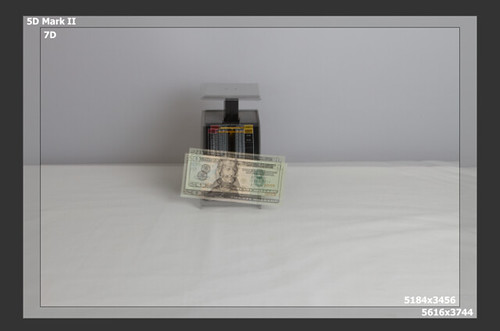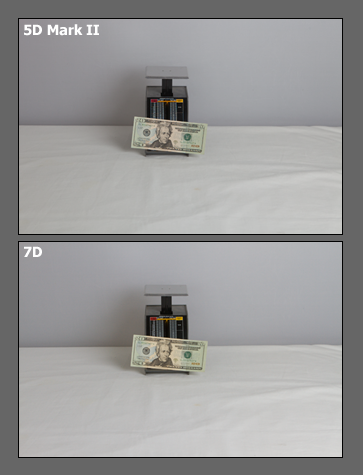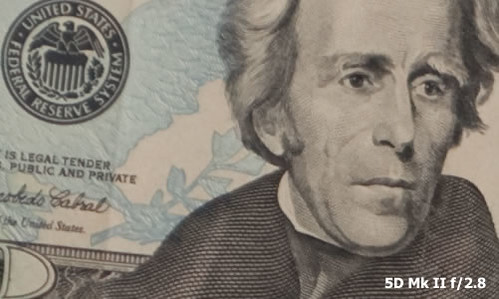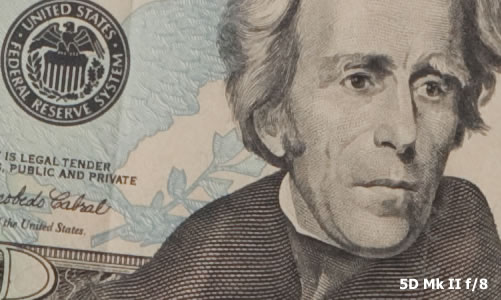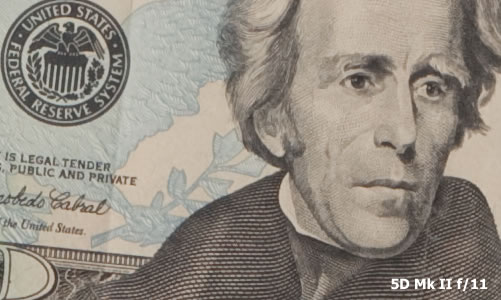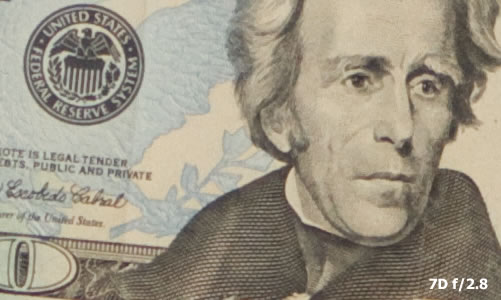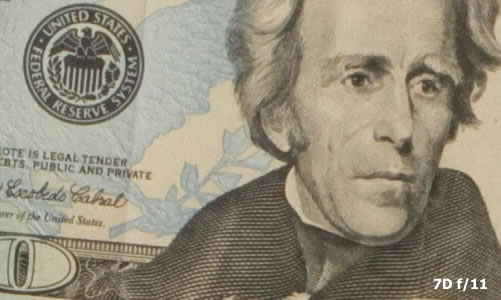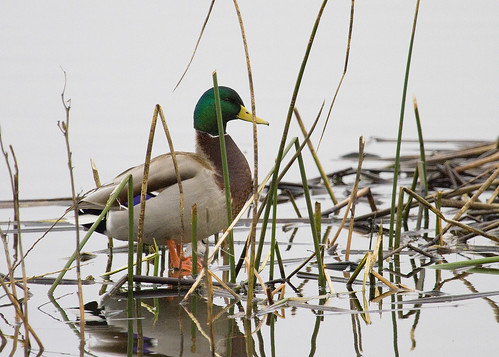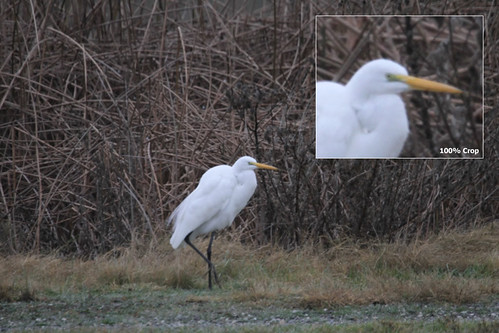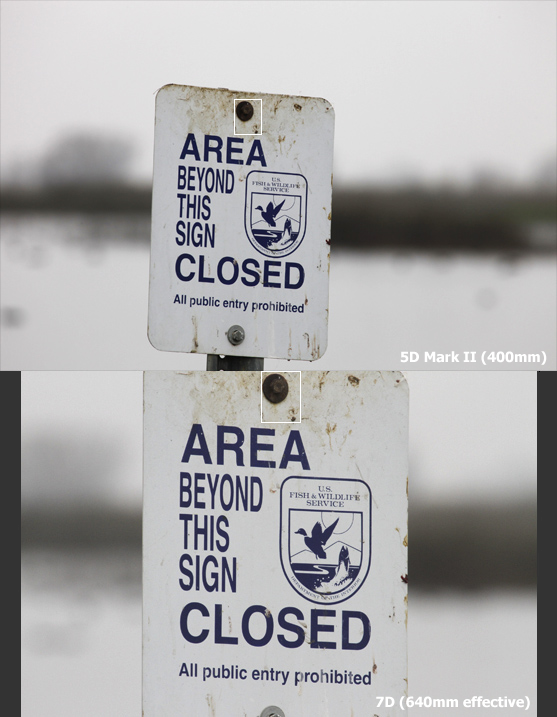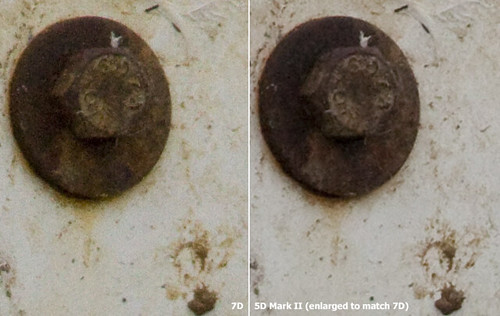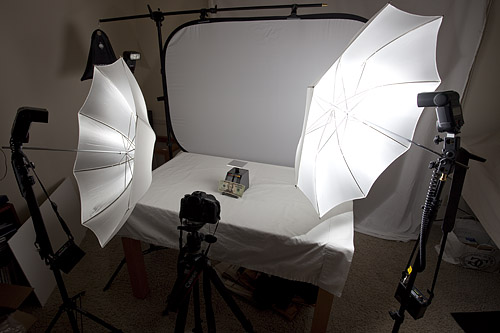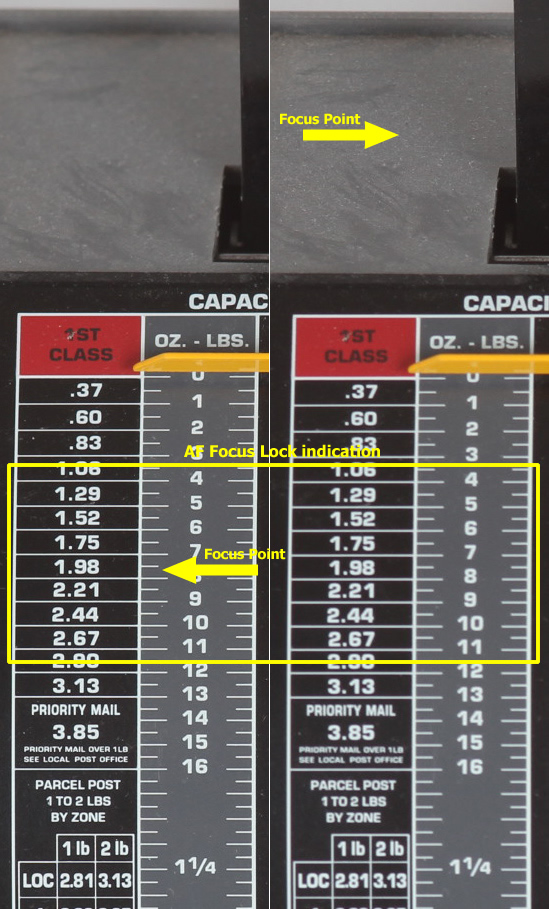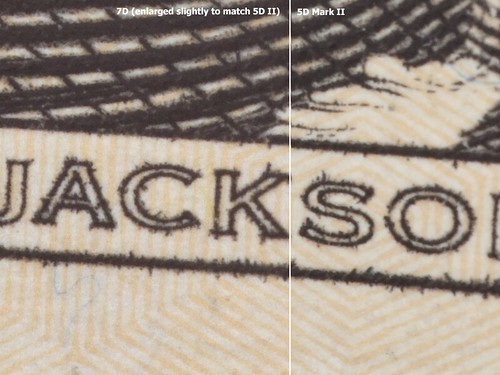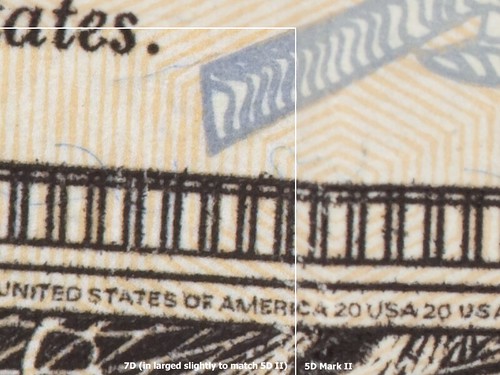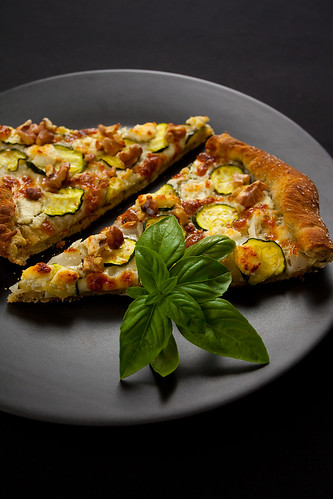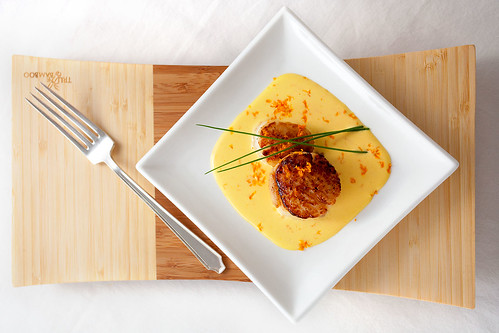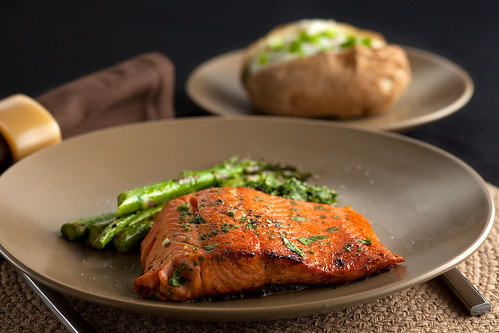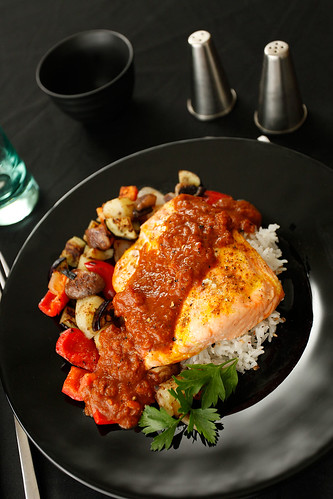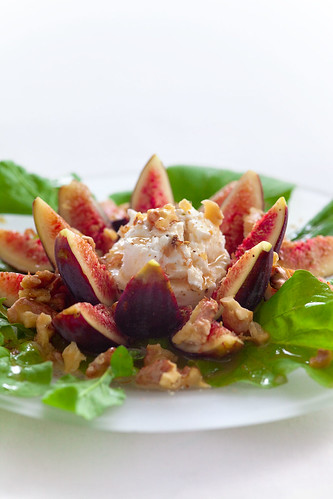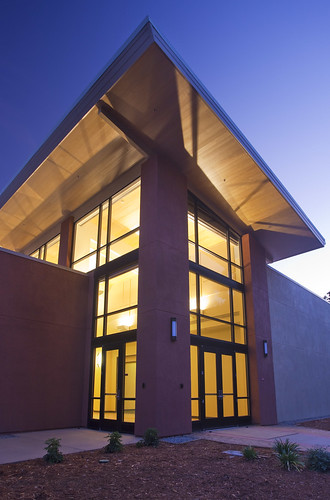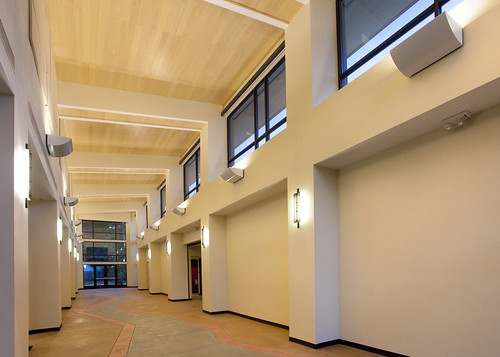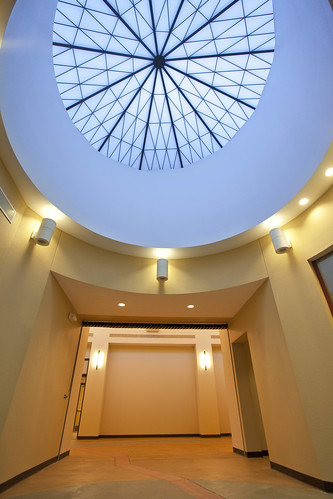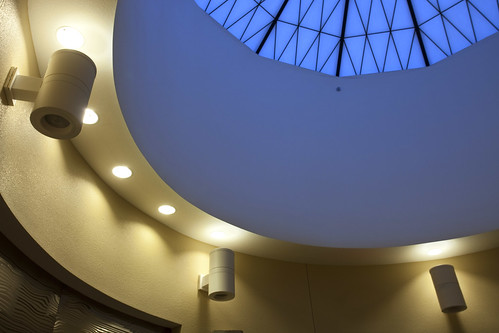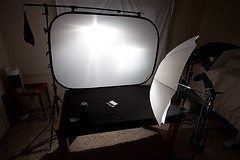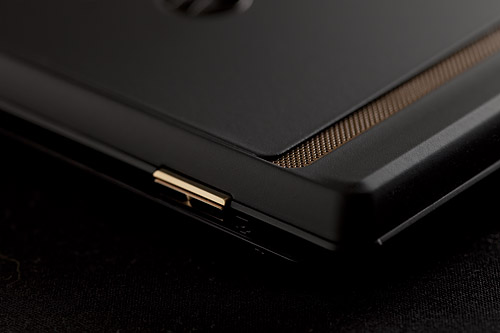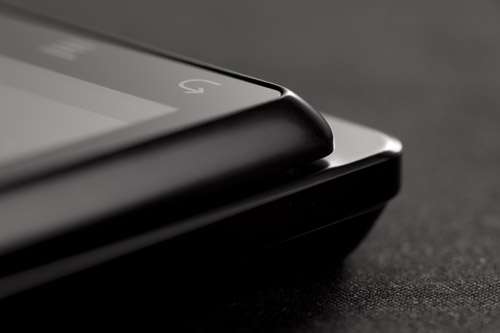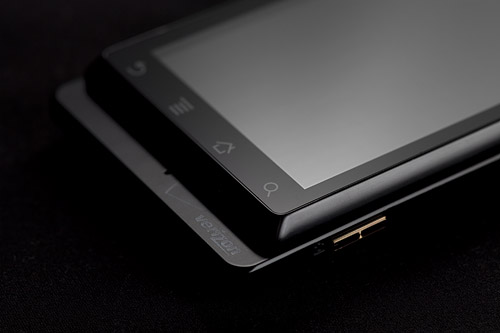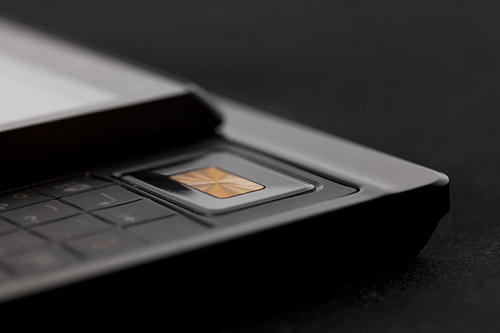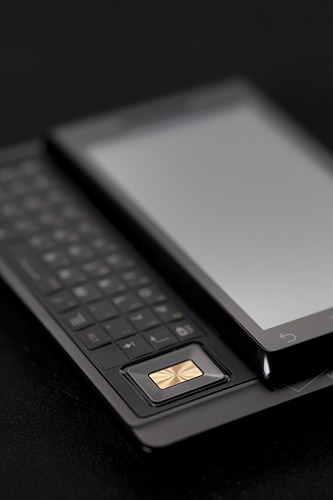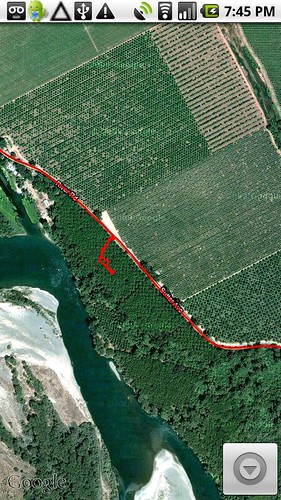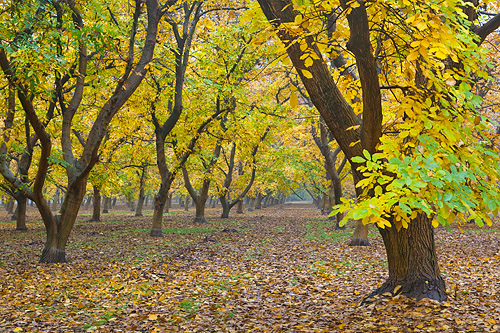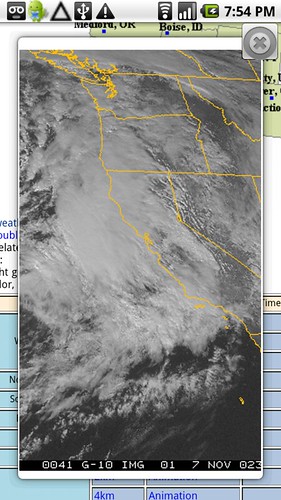The Sundial Bridge in Redding is probably the most famous piece of architecture in the north state. Designed by world famous architect Santiago Calatrava, and completed in 2004, the Sundial Bridge draws people from all over.
For me as a photographer, the Sundial Bridge is a fascinating abstract sculpture, and a location amazingly suited for practicing abstract composition. As a result, I have brought my photography classes and workshops to the Sundial Bridge repeatedly, and have used it to teach basic and complex compositional concepts.
But regardless of its effectiveness as a teaching tool, it is a beautiful structure and one that always surprises me with new angles and new beauty.
Here are a few images that I've taken over the years, highlighting the abstract nature of the Sundial Bridge.
Tuesday, December 29, 2009
Wednesday, December 23, 2009
Merry Christmas Chico!
I went downtown a few days ago at sunset and took a few images of the downtown Plaza in Chico.
The lit Christmas tree added at lot of color - and sense of the Christmas season - to these photos of the fountain in the center of the Plaza.
Merry Christmas Chico!
The lit Christmas tree added at lot of color - and sense of the Christmas season - to these photos of the fountain in the center of the Plaza.
Merry Christmas Chico!
Monday, December 21, 2009
Canon 7D Review - Focusing on Focus
As I said in a previous post, this blog is not a gear review blog. However, I just purchased a new Canon 7D DSLR and felt that I should add my two cents to various discussions that have been happening regarding this camera.
If you don't want to read about camera gear and the various arguments that photographers have about how many pixels can dance on the head of a pin, then you can stop reading right now and I won't be offended.
Some people, but certainly not all, have had issues with focusing and specifically image sharpness on the 7D. One of the more damning posts, from an image quality assessment, came from photographer Darwin Wiggett. He called the 7D "the camera we want to love". There are numerous other posts out there, particularly in the DP Review forums regarding softness issues with this camera.
Well, if this camera is so problematic, why did I purchase one? One reason I bought the 7D was to it use for wildlife photography. Though I don't do a lot of wildlife photography, it is something that clients occasionally request. My main body is a Canon 5D Mark II - a full frame body. Whereas a full frame camera gives you the advertised focal length of a lens (e.g., 400mm), a crop-framed camera such as the 7D gives you a 1.6X increase in effective focal length (e.g., 400mm = 640mm). That can be a great increase in 'reach' for relatively little money, particularly when a 600mm lens might cost $8000.
Of course, that wasn't the only reason I purchased a 7D; the improved autofocus and built-in wireless flash control were also important factors. Additionally, I knew that some people were getting outstanding results from their 7D's. I just hoped that mine would be sharp.
But I wasn't about to take that for granted, so since I received mine from B&H Photo last Thursday, I've been running tests on it.
This review focuses (no pun intended) solely on focusing and sharpness issues. Feature- and handling-wise, I think this is a great camera. But when it comes to 'pixel-peeping', it may be another story.
The first thing I decided to do was run the 7D up against my 5D Mark II.
Not a fair comparison, you say? Actually, all other things being equal, these two cameras should produce images with very similar resolutions. The 5D II produces images of 5616x3744 pixels (21.1Mp); the 7D produces images of 5184x3456 pixels (18.0Mp). If you do the math, the 5D II theoretically produces 8.3% higher resolution than the 7D - which should not be discernible even at 100% enlargement.
Note: all images in these tests were shot in RAW format and given default processing in Adobe Camera Raw. I did play around with sharpening, but it always introduced noise, so I considered that an unacceptable option.
Round 1: Photoshop Calls the FBI
I placed the camera on a tripod, set up a couple of flashes and took a few shots of a $20 bill in front of an old postal scale. I rarely use the scale, so it's covered by a layer of fine dust that comes in very handy in doing resolution tests.
I put the camera in One Shot AF mode, and took a bunch of photos at different f-stops. I did the same with the 5D Mark II. Even though the different sensor sizes produced a different crop, I adjusted the zoom on my lens (43mm for the 7D, 70mm for the 5D II) to give the same apparent subject size.
When I went open the RAW images in Photoshop, I made a very interesting discovery: Photoshop recognizes photographs of 'banknotes' and refuses to open them. It probably also reported me to the FBI. So I guess these photos might be illegal, but I swear I'm not trying to counterfeit anything!
Anyway, I ended up taking screenshots of the images at 100% in Adobe Camera Raw and then pasting those screenshots into another application that wasn't as 'sensitive' to potentially illegal activities.
One thing I wanted to test was the claim made by some that image quality for the 7D would begin to decline after about f/5.6 or so. I thought this concept was absolute bunk, so I tested the 5D II and 7D at various apertures.
All images were taken in manual mode, 1/80th sec, ISO 200, Canon 28-70mm f/2.8 L lens. The images below are 100% crops.
Canon 5D Mark II
Canon 7D
Even though I had to enlarge the 5D II image considerably to make up for the 1.6X magnification advantage of the 7D, the two images returned virtually identical levels of resolution, and the 7D has noticeably more noise.
Here are crops of two shots, taken one right after the other:
In both shots, the AF 'locked' on the center of the face of the scale, but only focused there on the first shot. The second shot is severely backfocused.
Round 3 Verdict: Aha!
Round 4: Back to Jackson
Now I had a theory to test, so I went back to my trusty Andrew Jackson $20 bill. But this time I wasn't going to photograph the whole bill - I was going to use my extremely sharp Sigma 105mm 1:1 macro lens and shoot only a tiny portion of the bill... and hope that Photoshop wasn't smart enough to tell that it was still a $20 bill.
My plan this time was to manually focus each shot, using live view at 10X to give me the sharpest focus possible. This time, I also moved the camera closer and farther from the subject in order to retain the exact same scale and framing for each camera (which is not as easy as you'd think).
I took two shots with each camera: one focused on the teensy tiny word "America" on the left side of the bill, and the other focused on the word "Jackson".
Round 4 Verdict: The sensor rocks, the AF sucks
Though it seems clear that the AF on my camera has 'issues', there are still a number of images I've taken with the 7D that are soft all the way around, with no part of the image appearing in focus (e.g., the egret photo). I don't have an answer for what's causing that.
But I do know that I have an RMA number from B&H and will be sending this copy of the 7D back. I'm hoping that the one that replaces it will have more reliable autofocus.
In truth, I almost hate to send it back since I was able to get such incredibly sharp images out of the 7D. But it took so much work to get those images, and I had so many more that were worthless, that there is no way I could rely on the 7D's AF for my daily business.
If you don't want to read about camera gear and the various arguments that photographers have about how many pixels can dance on the head of a pin, then you can stop reading right now and I won't be offended.
Some people, but certainly not all, have had issues with focusing and specifically image sharpness on the 7D. One of the more damning posts, from an image quality assessment, came from photographer Darwin Wiggett. He called the 7D "the camera we want to love". There are numerous other posts out there, particularly in the DP Review forums regarding softness issues with this camera.
Well, if this camera is so problematic, why did I purchase one? One reason I bought the 7D was to it use for wildlife photography. Though I don't do a lot of wildlife photography, it is something that clients occasionally request. My main body is a Canon 5D Mark II - a full frame body. Whereas a full frame camera gives you the advertised focal length of a lens (e.g., 400mm), a crop-framed camera such as the 7D gives you a 1.6X increase in effective focal length (e.g., 400mm = 640mm). That can be a great increase in 'reach' for relatively little money, particularly when a 600mm lens might cost $8000.
Of course, that wasn't the only reason I purchased a 7D; the improved autofocus and built-in wireless flash control were also important factors. Additionally, I knew that some people were getting outstanding results from their 7D's. I just hoped that mine would be sharp.
But I wasn't about to take that for granted, so since I received mine from B&H Photo last Thursday, I've been running tests on it.
This review focuses (no pun intended) solely on focusing and sharpness issues. Feature- and handling-wise, I think this is a great camera. But when it comes to 'pixel-peeping', it may be another story.
The first thing I decided to do was run the 7D up against my 5D Mark II.
Not a fair comparison, you say? Actually, all other things being equal, these two cameras should produce images with very similar resolutions. The 5D II produces images of 5616x3744 pixels (21.1Mp); the 7D produces images of 5184x3456 pixels (18.0Mp). If you do the math, the 5D II theoretically produces 8.3% higher resolution than the 7D - which should not be discernible even at 100% enlargement.
The images produced by the 7D are only marginally smaller than the 5D II.
Note: all images in these tests were shot in RAW format and given default processing in Adobe Camera Raw. I did play around with sharpening, but it always introduced noise, so I considered that an unacceptable option.
Round 1: Photoshop Calls the FBI
I placed the camera on a tripod, set up a couple of flashes and took a few shots of a $20 bill in front of an old postal scale. I rarely use the scale, so it's covered by a layer of fine dust that comes in very handy in doing resolution tests.
I put the camera in One Shot AF mode, and took a bunch of photos at different f-stops. I did the same with the 5D Mark II. Even though the different sensor sizes produced a different crop, I adjusted the zoom on my lens (43mm for the 7D, 70mm for the 5D II) to give the same apparent subject size.
Images framed to give the same apparent subject size.
When I went open the RAW images in Photoshop, I made a very interesting discovery: Photoshop recognizes photographs of 'banknotes' and refuses to open them. It probably also reported me to the FBI. So I guess these photos might be illegal, but I swear I'm not trying to counterfeit anything!
Anyway, I ended up taking screenshots of the images at 100% in Adobe Camera Raw and then pasting those screenshots into another application that wasn't as 'sensitive' to potentially illegal activities.
One thing I wanted to test was the claim made by some that image quality for the 7D would begin to decline after about f/5.6 or so. I thought this concept was absolute bunk, so I tested the 5D II and 7D at various apertures.
All images were taken in manual mode, 1/80th sec, ISO 200, Canon 28-70mm f/2.8 L lens. The images below are 100% crops.
Canon 5D Mark II
Canon 7D
I notice two things from this test:
- The people who say that you can't shoot over f/5.6 with the 7D are full of it. The f/11 image is clearly (if marginally) sharper than the f/5.6 image.
- Holy moly, the 7D is as soft as Charmin compared to the crispness of the 5D II, particularly in the detail of Andrew Jackson's face.
Round 1 Verdict: I just wanted to toss the 7D in the trash.
Potential flaws in my technique: for this shoot I didn't move the camera, but rather zoomed the lens. Just as lens sharpness varies from aperture to aperture, it also varies from focal length to focal length, which may have affected the results.
Round 2: The Game is Afoot!
Actually, there wasn't much game afoot the day I took the 7D into the field. But I bought it mainly to use as a wildlife body, with it's fast and flexible AF and 1.6 crop factor.
Here is where I started to wonder what was up. Though it was a crappy overcast day, I got some decent shots with the 7D. The autofocus seemed sure and fast. But the results were as often horrible as they were decent.
Some shots came out nice, despite the crappy weather:
Some shots came out nice, despite the crappy weather:
1/400th, f/5.6, ISO 800, AI Servo AF (view at large size for more detail)
Others were inexplicably soft all across the image. The image below has not one single area that appears perfectly in focus. I had a number of images like this.
Those were about the only two birds I saw, but I did take a few photos of a sign in an attempt to gather more information about the camera.
1/400th, f/5.6, ISO 800, AI Servo AF (view at large size for more 'detail')
Those were about the only two birds I saw, but I did take a few photos of a sign in an attempt to gather more information about the camera.
1/200th, f/11, ISO 800, One Shot Focus AF, Canon 100-400 L IS, at 400mm
Even though I had to enlarge the 5D II image considerably to make up for the 1.6X magnification advantage of the 7D, the two images returned virtually identical levels of resolution, and the 7D has noticeably more noise.
100% crop of 7D image, enlarged crop of 5D II image (view full size for more detail)
Round Two Verdict: WTF?
Round Three: Tipping the Scales
So after that indecisive experience, it was back to the studio. This time, I tried repeating the first test, but this time without the $20 bill. I put the camera on a tripod, with a couple of flashes:
The results were all over the place. Some images seemed sharp, but most were soft. I had put the camera in One Shot AF and refocused between each shot when I changed the aperture. Each time the camera locked on the center part of the scale dial.
I couldn't figure out why some images seemed tack sharp while others were undeniably soft, when I suddenly noticed in one soft image that the dust on top of the scale was perfectly sharp. The problem snapped suddenly into sharp focus (OK, seriously, did you think I could resist that? Really?): the AF was not focusing at the same point on every shot!
Round Three: Tipping the Scales
So after that indecisive experience, it was back to the studio. This time, I tried repeating the first test, but this time without the $20 bill. I put the camera on a tripod, with a couple of flashes:
The results were all over the place. Some images seemed sharp, but most were soft. I had put the camera in One Shot AF and refocused between each shot when I changed the aperture. Each time the camera locked on the center part of the scale dial.
I couldn't figure out why some images seemed tack sharp while others were undeniably soft, when I suddenly noticed in one soft image that the dust on top of the scale was perfectly sharp. The problem snapped suddenly into sharp focus (OK, seriously, did you think I could resist that? Really?): the AF was not focusing at the same point on every shot!
Here are crops of two shots, taken one right after the other:
Both images are 1/80th, f/8, 100, Sigma 105mm macro lens
In both shots, the AF 'locked' on the center of the face of the scale, but only focused there on the first shot. The second shot is severely backfocused.
Round 3 Verdict: Aha!
Round 4: Back to Jackson
Now I had a theory to test, so I went back to my trusty Andrew Jackson $20 bill. But this time I wasn't going to photograph the whole bill - I was going to use my extremely sharp Sigma 105mm 1:1 macro lens and shoot only a tiny portion of the bill... and hope that Photoshop wasn't smart enough to tell that it was still a $20 bill.
My plan this time was to manually focus each shot, using live view at 10X to give me the sharpest focus possible. This time, I also moved the camera closer and farther from the subject in order to retain the exact same scale and framing for each camera (which is not as easy as you'd think).
I took two shots with each camera: one focused on the teensy tiny word "America" on the left side of the bill, and the other focused on the word "Jackson".
The two focus areas used for the images
The results confirmed my theory. When manually focused using live view at high magnification, images from the 7D are every bit as sharp and detailed as images from the 5D Mark II, if not more so.
7D on the left, 5D II on the right. Very difficult to discern any difference in resolution or sharpness. (100% crop for 5D II, 7D image slightly enlarged to match)
7D on left, 5D II on right. Here the 7D image appears clearly sharper than the 5D II image, possibly due to the fact that the 7D is using a better part of the lens. (100% crop for 5D II, 7D image slightly enlarged to match)
Round 4 Verdict: The sensor rocks, the AF sucks
Though it seems clear that the AF on my camera has 'issues', there are still a number of images I've taken with the 7D that are soft all the way around, with no part of the image appearing in focus (e.g., the egret photo). I don't have an answer for what's causing that.
But I do know that I have an RMA number from B&H and will be sending this copy of the 7D back. I'm hoping that the one that replaces it will have more reliable autofocus.
In truth, I almost hate to send it back since I was able to get such incredibly sharp images out of the 7D. But it took so much work to get those images, and I had so many more that were worthless, that there is no way I could rely on the 7D's AF for my daily business.
Wednesday, December 16, 2009
My OTHER Photography Blog
I've been blogging for years. This is my fifth or sixth blog, I think. Technically, all but one or two of those blogs are still going, but in reality, there are three that get any regular attention.
My first blog was a weekly wine column that I did for a local newspaper. Amazingly, the posts can still be read here: wine-thoughts.blogspot.com.It was a humorous column attempting to make wine accessible to 'regular folks'.
Last summer, with business in the recession doldrums, my wife and I started a food photography blog. Food is something I love, but also something that I'd never photographed, so I thought that it would be a good learning and growing opportunity. I didn't do it with the intent of becoming a food photographer; I did it because I simply wanted to learn something new and expand my horizons photographically.
The blog was rather optimistically called 365 Days of Food, but with my wife working 3 to 4 nights a week for the past several months, coupled with some improvement in business, it has been almost impossible to keep it up on the a daily basis as we had hoped.
However, I did manage to write a new post and send it out this morning, so I thought that I'd share it here as well: Crab Fettuccine in Alfredo Sauce. Take a look and let me know what you think.
Here's a few other images from that blog...
My first blog was a weekly wine column that I did for a local newspaper. Amazingly, the posts can still be read here: wine-thoughts.blogspot.com.It was a humorous column attempting to make wine accessible to 'regular folks'.
Last summer, with business in the recession doldrums, my wife and I started a food photography blog. Food is something I love, but also something that I'd never photographed, so I thought that it would be a good learning and growing opportunity. I didn't do it with the intent of becoming a food photographer; I did it because I simply wanted to learn something new and expand my horizons photographically.
The blog was rather optimistically called 365 Days of Food, but with my wife working 3 to 4 nights a week for the past several months, coupled with some improvement in business, it has been almost impossible to keep it up on the a daily basis as we had hoped.
However, I did manage to write a new post and send it out this morning, so I thought that I'd share it here as well: Crab Fettuccine in Alfredo Sauce. Take a look and let me know what you think.
Here's a few other images from that blog...
Monday, December 14, 2009
The Gateway Science Museum, Chico
As a nature photographer, I've always been interested in the natural sciences. In fact, I got my bachelor's degree in Natural Resource Management. As a result, I've always been a big supporter of the Northern California Natural History Museum, which was recently renamed the Gateway Science Museum.
For many years, the museum has been little more than a few dedicated staff and some architectural drawings, but they finally received enough funding to actually build the museum. I was honored that the museum approached me to do the first shoots of the nearly completed, but empty future of home of northern California's only science museum.
I was more than happy to donate my time to take these photos for the museum, particularly since non-profit organizations like this struggle in tough economic times.
Given that I had only one evening a one cloudy morning for the shoot, I think I was able to do a decent job capturing the character of the still empty building. I used only natural light for the evening shoot, relying on the darking sky to give some balance to the exterior lighting, and relying on only interior lights for the interior shots.
For many years, the museum has been little more than a few dedicated staff and some architectural drawings, but they finally received enough funding to actually build the museum. I was honored that the museum approached me to do the first shoots of the nearly completed, but empty future of home of northern California's only science museum.
I was more than happy to donate my time to take these photos for the museum, particularly since non-profit organizations like this struggle in tough economic times.
Given that I had only one evening a one cloudy morning for the shoot, I think I was able to do a decent job capturing the character of the still empty building. I used only natural light for the evening shoot, relying on the darking sky to give some balance to the exterior lighting, and relying on only interior lights for the interior shots.
Wednesday, December 9, 2009
Hallmarks of the Sacramento Valley: The Sacramento River
Nothing communicates the character of the Sacramento Valley's natural environment like the Sacramento River.
The river begins way up near the Oregon border in the northeast corner of the state as the Pit River. A shorter tributary, the Sacramento River proper, begins on the slopes of Mt. Shasta. Along with the McCloud River, they meet at Shasta Lake and flow from there through the valley, past downtown Sacramento, into the Sacramento Delta, and then on to the San Francisco Bay.
You can learn a lot more about the river on these sites:
The river begins way up near the Oregon border in the northeast corner of the state as the Pit River. A shorter tributary, the Sacramento River proper, begins on the slopes of Mt. Shasta. Along with the McCloud River, they meet at Shasta Lake and flow from there through the valley, past downtown Sacramento, into the Sacramento Delta, and then on to the San Francisco Bay.
You can learn a lot more about the river on these sites:
As one of the defining natural and recreational features of the Sacramento Valley, photographs of the river can do a lot to communicate the character and lifestyle in our region.
Here are a few of my images of the Sacramento River at its tributaries:
The Pit River at Fall River Mills, in far northeastern California
Boaters on the Sacramento River near Anderson
The Sacramento River at Sacramento
The Sacramento skyline reflected in the Sacramento River
Clouds reflected in the Sacramento River near Knights Landing
The Sacramento River at Rio Vista in the Sacramento Delta
Monday, December 7, 2009
The Motorola Droid Phone
This isn't a product review blog, and if it were, it would contain reviews of camera equipment, not cell phones. However, I recently got a Motorola Droid, and I find it such a wonderful device that I thought I'd share my thoughts on it (while at the same time sharing a bit of product photography).
First, a few photos.
The Droid is such an industrial-looking piece of hardware that I decided to takes some photographs of it. I used a simple two-light setup (actually three lights, but the two rear lights acted as a single source - click on the image for more detail on the lighting) and moved the phone around to get different lighting effects.
This simple lighting set up worked very well. I kept the lighting low keyed, to accentuate the rather masculine, industrial look of the phone, and to bring out its textures. I used a 100mm macro lens for most of the shots, in order to get the tight detail shots. All images were taken with a Canon 5D Mark II.
What I Like About the Droid
There is actually very little I dislike about the Droid; it's fast, it's flexible. There are plenty of apps, but not as many as for the iPhone - yet. The GPS and location-based services (like turn-by-turn GPS, GPS trip tracking, Locale, Layar, etc.) are simply incredible. These alone have changed the way I do a lot of things.
Verizon's 3G coverage is extensive. On a recent shoot (see map below), there was only one location where I didn't have 3G coverage, even though I was out in the middle of the Sacramento Valley, far from the towns and freeways. I had internet access to weather info and satellite photos (critical to a landscape photographer) from nearly every location.
The Google integration is automatic and pretty amazing. Since Android is Google's phone OS, that's not surprising, but it is very nice. Sign into your Google account when you first get the phone, and it automatically synchronizes your Gmail, Google Calendar, and most of your other Google apps. It's that easy.
I love using the barcode scanning app to check product prices and reviews while in the store, and the Google Sky Map is great for figuring out what star or planet you're looking at in the night sky.
Bottom line: it's basically a pocket computer with built in turn-by-turn GPS. As long as you have Internet access, you have just about everything you could need.
What I Don't Like About the Droid
The camera sucks. Cell phone cameras pretty much all suck image quality-wise, but the Droid goes one better by making the camera so slow to focus and unresponsive that it's very frustrating to use. When the aliens land and the Droid is all I have on me, will I use it to take those first Pulitzer Prize winning photos? Of course I will; but that doesn't change the fact that the camera sucks.
Just as Google apps integration is awesome, the complete lack of iTunes integration is not awesome. I have a far library of music purchased from iTunes that I can't use on my Droid. Oh, well. I'll be buying my music from the Amazon MP3 store from now on.
Because the Droid multitasks, unlike the iPhone, it is possible to get so many things running that the phone slows downs considerably. There are 'app killer' apps that you can download to kill memory eating apps, but sometimes restarting the phone is the only way to clear out all the crap that you've launched. This is a minor but unnecessary annoyance. Every app should have a Quit option.
The physical keyboard is basically worthless in my view. The virtual keyboard works fine (though my big fingers are clumsy), particularly since it suggests words as you type. Get four letters into a word and you can usually just click on it. They could have saved on the weight and thickness of the phone by omitting the physical keyboard.
How I used the Droid in my Business
Of course, it's a phone, so I use it to communicate with clients, but since it is also synced with my email and calendar, I use it to receive and send email, check meetings, etc. None of that is news to anyone. What is new are some of the location-based abilities of the phone.
A lot of the shoots I do are in the field, particularly landscape and agricultural shoots require a lot of driving. As a business, my mileage is a legitimate expense. But I'm too lazy to check the mileage at the start and end of every trip. I used to manually enter my path into MS Streets and Trips after every shoot, but with the Droid and Google My Tracks, I can just press a button and have the GPS unit on the phone record every step of my trip.
Here's a shoot I went on a couple of weeks ago:
The Droid recorded every turn of the trip, and reported total distance, as well as a lot of stuff I 'm not that concerned about:
With a single tap of the screen, I can save this trip to my Google My Maps. Every shoot I go on, I have a audit-proof record of my mileage.
And the detail and accuracy of the GPS is astounding. Here's a screen capture of my wanderings in a walnut orchard as I was taking photos:
The great thing is that I can pinpoint the location of each and every image I take. If only there were an automatic geotagging tool that would add the location to the EXIF info in my Canon 5D Mk II as I took each image. That would rock. Cameras need to get built-in Bluetooth to communicate with our smartphones. Are you listening Canon/Nikon/Sony/Pentax?
Here's a photo from that specific orchard:
First, a few photos.
The Droid is such an industrial-looking piece of hardware that I decided to takes some photographs of it. I used a simple two-light setup (actually three lights, but the two rear lights acted as a single source - click on the image for more detail on the lighting) and moved the phone around to get different lighting effects.
This simple lighting set up worked very well. I kept the lighting low keyed, to accentuate the rather masculine, industrial look of the phone, and to bring out its textures. I used a 100mm macro lens for most of the shots, in order to get the tight detail shots. All images were taken with a Canon 5D Mark II.
What I Like About the Droid
There is actually very little I dislike about the Droid; it's fast, it's flexible. There are plenty of apps, but not as many as for the iPhone - yet. The GPS and location-based services (like turn-by-turn GPS, GPS trip tracking, Locale, Layar, etc.) are simply incredible. These alone have changed the way I do a lot of things.
Verizon's 3G coverage is extensive. On a recent shoot (see map below), there was only one location where I didn't have 3G coverage, even though I was out in the middle of the Sacramento Valley, far from the towns and freeways. I had internet access to weather info and satellite photos (critical to a landscape photographer) from nearly every location.
The Google integration is automatic and pretty amazing. Since Android is Google's phone OS, that's not surprising, but it is very nice. Sign into your Google account when you first get the phone, and it automatically synchronizes your Gmail, Google Calendar, and most of your other Google apps. It's that easy.
I love using the barcode scanning app to check product prices and reviews while in the store, and the Google Sky Map is great for figuring out what star or planet you're looking at in the night sky.
Bottom line: it's basically a pocket computer with built in turn-by-turn GPS. As long as you have Internet access, you have just about everything you could need.
What I Don't Like About the Droid
The camera sucks. Cell phone cameras pretty much all suck image quality-wise, but the Droid goes one better by making the camera so slow to focus and unresponsive that it's very frustrating to use. When the aliens land and the Droid is all I have on me, will I use it to take those first Pulitzer Prize winning photos? Of course I will; but that doesn't change the fact that the camera sucks.
Just as Google apps integration is awesome, the complete lack of iTunes integration is not awesome. I have a far library of music purchased from iTunes that I can't use on my Droid. Oh, well. I'll be buying my music from the Amazon MP3 store from now on.
Because the Droid multitasks, unlike the iPhone, it is possible to get so many things running that the phone slows downs considerably. There are 'app killer' apps that you can download to kill memory eating apps, but sometimes restarting the phone is the only way to clear out all the crap that you've launched. This is a minor but unnecessary annoyance. Every app should have a Quit option.
The physical keyboard is basically worthless in my view. The virtual keyboard works fine (though my big fingers are clumsy), particularly since it suggests words as you type. Get four letters into a word and you can usually just click on it. They could have saved on the weight and thickness of the phone by omitting the physical keyboard.
How I used the Droid in my Business
Of course, it's a phone, so I use it to communicate with clients, but since it is also synced with my email and calendar, I use it to receive and send email, check meetings, etc. None of that is news to anyone. What is new are some of the location-based abilities of the phone.
A lot of the shoots I do are in the field, particularly landscape and agricultural shoots require a lot of driving. As a business, my mileage is a legitimate expense. But I'm too lazy to check the mileage at the start and end of every trip. I used to manually enter my path into MS Streets and Trips after every shoot, but with the Droid and Google My Tracks, I can just press a button and have the GPS unit on the phone record every step of my trip.
Here's a shoot I went on a couple of weeks ago:
The Droid recorded every turn of the trip, and reported total distance, as well as a lot of stuff I 'm not that concerned about:
With a single tap of the screen, I can save this trip to my Google My Maps. Every shoot I go on, I have a audit-proof record of my mileage.
And the detail and accuracy of the GPS is astounding. Here's a screen capture of my wanderings in a walnut orchard as I was taking photos:
The great thing is that I can pinpoint the location of each and every image I take. If only there were an automatic geotagging tool that would add the location to the EXIF info in my Canon 5D Mk II as I took each image. That would rock. Cameras need to get built-in Bluetooth to communicate with our smartphones. Are you listening Canon/Nikon/Sony/Pentax?
Here's a photo from that specific orchard:
Because I have internet connectivity, I can check the weather - particularly satellite photos for the location of clouds. When I'm in the field doing landscape photography, knowing where the clouds are going can make the difference between getting some incredible images or being left in the dark.
Here's a shot of the sky a few weeks ago:
Pretty overcast, but that's what I was looking for while shooting walnut orchards. Many times when I'm in the field I am chasing the light, and knowing where the good clouds are (or are going) can make all the difference in the world.
I've only had the Droid for a couple of weeks, so I don't really know yet all the ways that it will affect my business, but just the trip tracking and Internet access have already made a huge difference in how I do work in the field.
Add the ability to communicate directly with the camera, and you'd have an everything phone.
The Bottom Line
Everyone asks me if the Droid is an iPhone killer. I know a lot of people with iPhones, and, at least for me, the Droid is better in many ways. Multitasking to run location-based apps, built-in GPS, outstanding Verizon network - all of these let me use the phone in the field in ways that the iPhone probably wouldn't. I definitely think the Droid is going to cut into the iPhone market, particularly for those people, like me, who just couldn't accept a two year commitment to AT&T's crappy service.
Overall, even though the Droid isn't perfect, and it's still missing some apps I'd like to see, I couldn't be happier with it. It's an awesome device, and that's the bottom line.
I've only had the Droid for a couple of weeks, so I don't really know yet all the ways that it will affect my business, but just the trip tracking and Internet access have already made a huge difference in how I do work in the field.
Add the ability to communicate directly with the camera, and you'd have an everything phone.
The Bottom Line
Everyone asks me if the Droid is an iPhone killer. I know a lot of people with iPhones, and, at least for me, the Droid is better in many ways. Multitasking to run location-based apps, built-in GPS, outstanding Verizon network - all of these let me use the phone in the field in ways that the iPhone probably wouldn't. I definitely think the Droid is going to cut into the iPhone market, particularly for those people, like me, who just couldn't accept a two year commitment to AT&T's crappy service.
Overall, even though the Droid isn't perfect, and it's still missing some apps I'd like to see, I couldn't be happier with it. It's an awesome device, and that's the bottom line.
Subscribe to:
Comments (Atom)












